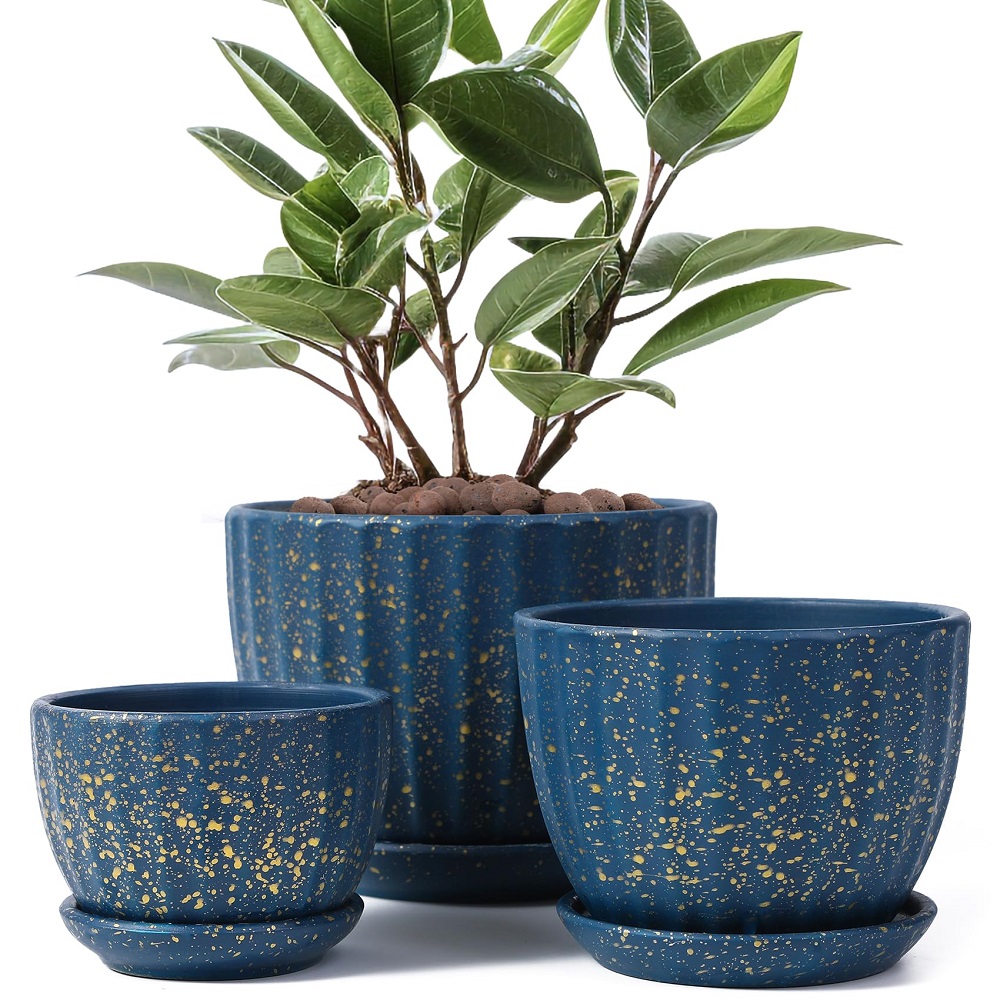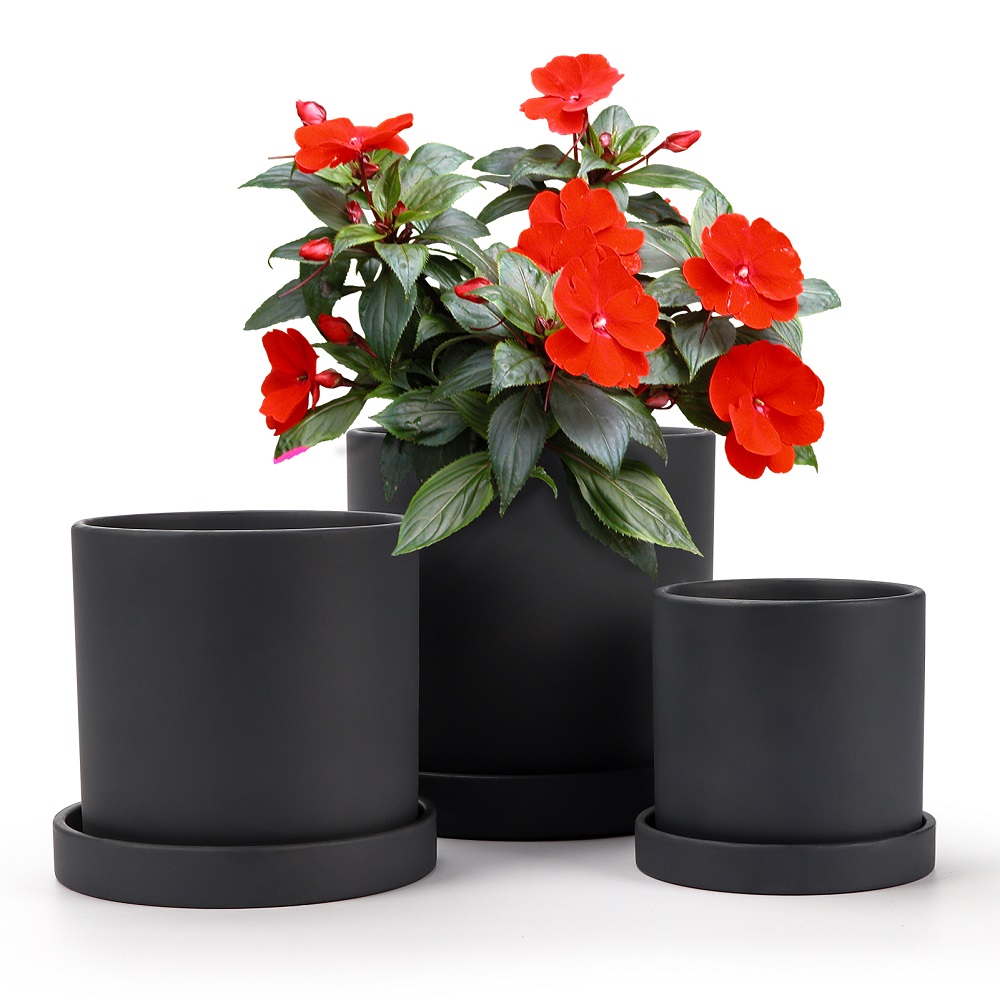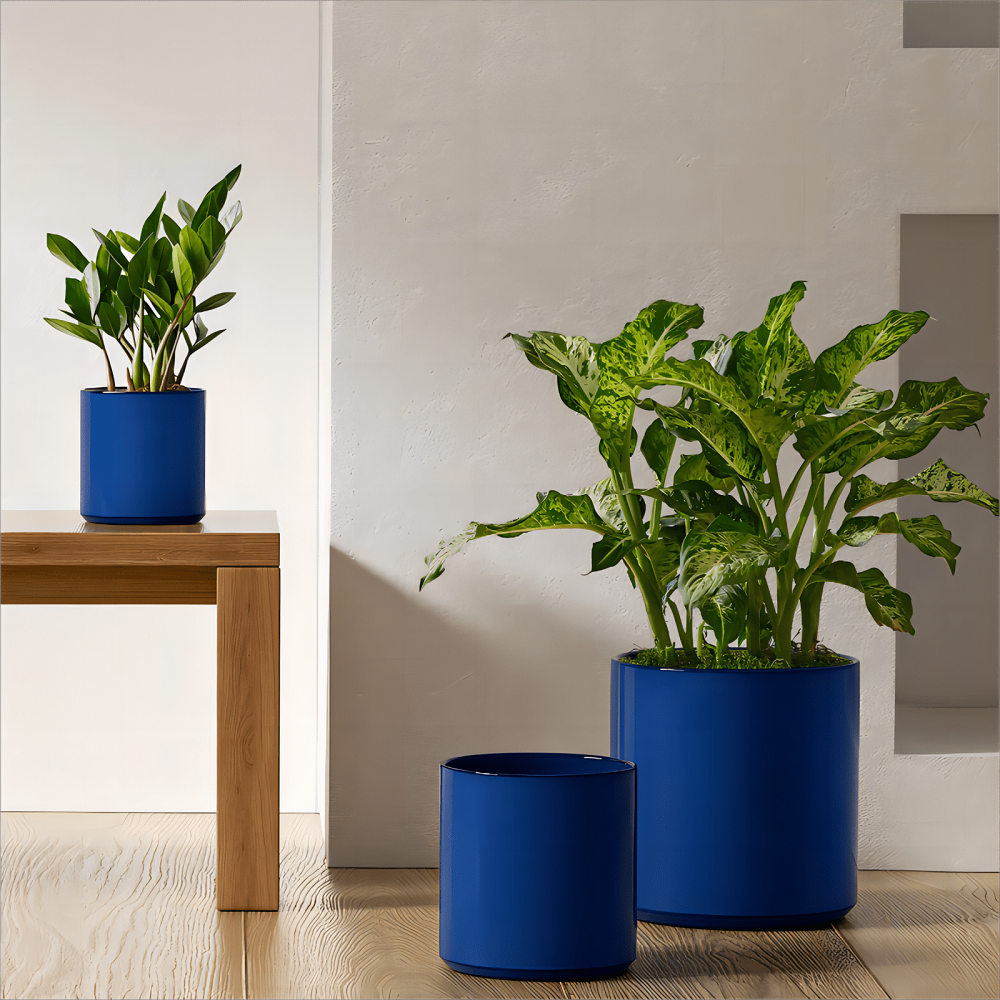The Importance of Drainage Holes in Flower Pots
The presence or absence of drainage holes in flower pots can greatly impact plant health. These holes allow excess water to escape, reducing the risk of root rot and other issues caused by overwatering. By providing a way for water to drain, these holes help to maintain the right level of moisture in the soil, which is crucial for the well-being of plants.
Why Drainage Holes are Essential for Plant Health
Drainage holes are a key factor in maintaining healthy plants inside your pots. They provide several benefits:
- Prevents Waterlogging: Allows surplus water to drain, preventing harmful water accumulation around plant roots.
- Encourages Oxygen Flow: Helps soil to breath by letting air reach the roots which is vital for plant growth.
- Avoids Salt Build-up: Flushes out salts and minerals that could otherwise accumulate and harm the plants.
Consequences of Lack of Drainage
Without adequate drainage, flower pots can create an environment that is detrimental to plant health. Some of the negative impacts include:
- Root Rot: Over-saturated soil can lead to fungal diseases that eat away plant roots.
- Stunted Growth: Lack of oxygen can stunt growth or even kill the plant.
- Salt Stress: Salts from water and fertilizers can build up, causing leaf burn and discoloration.
Given the negatives associated with poor drainage, ensuring your pots have the right setup is essential for thriving plants. Whether it involves drilling additional holes or using pots designed with drainage in mind, this step should not be overlooked.

Alternatives to Standard Drainage Holes
Not all pots come with pre-made holes. But, healthy plant growth is still possible.
Using Potting Containers with Built-in Drainage Solutions
Some containers have special features for drainage. These may include built-in trays or special liners. They help manage water so roots don’t get too wet. Use these if you can’t make holes in your pot.
Effective Use of Pebbles and Pot Liners for Water Management
If you can’t drill holes, use pebbles at the pot’s bottom. They create a space for extra water. This keeps roots dry and healthy. Also, pot liners or coffee filters can prevent soil from washing away. They offer a simple fix for pots without holes.
Step-by-Step Guide to Adding Drainage Holes
Adding drainage holes to plant pots enhances plant health.
Tools and Techniques for Drilling Perfect Holes
Use a standard drill with a masonry bit for ceramic or terracotta pots. For plastic, a standard drill bit works.
- Mark the position: Before drilling, mark the pot’s bottom where holes are needed.
- Start slow: Begin at a slow speed to prevent the pot from cracking.
- Even spacing: Ensure holes are evenly spaced to allow uniform water drainage.
Safety Tips When Creating Drainage Holes
When drilling holes, safety is crucial.
- Wear safety goggles: Protect your eyes from flying debris.
- Use gloves: Protect your hands from sharp edges and slip.
- Secure the pot: Ensure the pot is stable to avoid accidents while drilling.
- Clean up: After drilling, clear away any debris or dust to prevent messes.
Best Practices for Watering Plants in Non-Draining Pots
Watering plants without drainage holes requires careful attention. To maintain plant health, adopt best practices.
Monitoring Soil Moisture Levels
Check the soil before adding water. Use your finger or a soil moisture meter. This ensures you water only when needed. Aim for damp soil, not wet, to protect roots and prevent rot.
Strategies for Avoiding Waterlogging
Water plants in non-draining pots sparingly. Wait until the top layer of soil feels dry. Add water slowly and stop before water pools on the surface. This method prevents over-watering. Consider pouring excess water off after waiting a few minutes post-watering. This will help keep roots dry and healthy. Use potting mix that drains well to aid this process.

Potting Mix and Soil Considerations
Choosing the right soil is pivotal in gardening, especially when dealing with pots without drainage holes. Proper soil not only supports the health and growth of your plants but also mitigates potential waterlogging issues.
Choosing the Right Soil for Drainage and Plant Health
Select a potting mix that is well-aerated and loose, which helps in preventing water retention and supports proper root growth. Look for soil that includes perlite, vermiculite, or coarse sand; these components help improve drainage and air circulation around the roots. Organic materials, like compost or cocopeat, also provide nutrients and maintain moisture balance.
Benefits of Mixed Particulate Sizes in Potting Soil
Using a potting mix with varied particle sizes proves beneficial. Larger particles allow greater air flow, which reduces the risk of root diseases. Small particles, in contrast, help in retaining essential nutrients and moisture needed by the plant. This combination ensures a healthy environment for roots, fostering plant resilience and growth.
Innovative Planting Techniques Without Drainage Holes
Gardeners are getting creative with planting methods. Even without drainage holes, plants can thrive with careful water management.
Double Potting Method for Better Water Management
Double potting is an easy trick. Place your plant in a smaller pot with holes. Then, set it inside a larger, decorative pot without holes. Water the plant in the smaller pot. Any excess water escapes into the larger one. This avoids waterlogging and root rot. When you water, remove the inner pot and let it drain. Once it’s done, put it back in the outer pot.
Using Self-Watering Planters Effectively
Self-watering planters are another smart option. They have a water reservoir at the bottom. Roots reach down to access water as needed. Always check the water level. Keep it just right to avoid overwatering. These planters balance moisture and give plants just enough to drink. They make plant care easier and help avoid common watering mistakes.
Common Mistakes to Avoid with Potted Plants
Navigating the care of potted plants can be tricky. Even with the best intentions, common pitfalls can lead to unhealthy plants. Understanding these mistakes is key in ensuring the longevity of your green friends.
Over-watering and Under-watering Issues
Both too much and too little water can harm plants. Over-watering causes root rot, while under-watering leads to wilted and dying plants. Here is how you can avoid these watering blunders:
- Check soil moisture often: Stick your finger into the soil. If it’s dry a couple of inches down, it’s time to water.
- Use a watering schedule: Tailor this to your plant’s needs and adjust based on the season.
- Watch for signs: Drooping or yellow leaves may signal water problems.

Ignoring Signs of Poor Drainage and Root Health
The health of a plant’s roots is vital for its survival. Poor drainage can lead to a host of root issues. Here’s what to look for and how to take action:
- Check for drainage: Ensure your pots have holes or ways for excess water to escape.
- Keep an eye on root color: Healthy roots are typically white or light in color.
- Look for root changes: Soft, brown roots suggest decay from too much water.
In conclusion, proper watering and drainage are crucial for potted plant care. Remember to regularly check soil moisture, stick to a watering routine, and be alert for signs of root health problems. Happy gardening!
